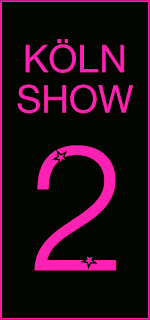KolnShow2 until 26.05., Cologne

From April 19th until May 26th 2007 the exhibition „was einmal über heute gesagt werden wird: KölnShow2“ („...what will be told of today tomorrow: KölnShow2“) will take place in 18 contemporary art galleries in Cologne.
The constitutional concept of the exhibition, curated by Nicolaus Schafhausen and Florian Waldvogel, ties up to „The Köln Show“ in 1990, a so far unique joint venture of nine Cologne based galeries. They organised an exhibition with at that point unknown artist, many of them having their names in the art world today.
In the 1980s and early-90s, the city of Cologne was one of the most important centres for contemporary art in Europe. With its many galleries, artist run-spaces, and artist bars, the city assumed a kind of mythological dimension, a place where artists came to show, sell, socialize, and distinguish themselves and their work on levels symbolic and real, depending on the conditions of the urban surrounding. „The Köln Show“ examined, consciously without institutional help, the specific relationship between art production, art scene and artmarket in Cologne in 1990.
Aiming at a future-orientated new foundation of a Kunsthalle in Cologne, the European Kunsthalle takes this now almost historical venture up. As one of the last projects of the European Kunsthalle during its two-year founding and research process, the exhibition „KölnShow2“ approaches directly the cultural activities of the city of Cologne. The exhibition presents a selection of the young international art scene in the spaces of the participating galleries, parallel to their own program. Using the temporal distance from the year 2007 to „The Köln Show“ in 1990, the exhibition reflects on contemporary general frameworks of cultural prosperity and artistic production in Cologne.
Rounding up the two-year founding phase the European Kunsthalle focuses on its actual position and departing point in Cologne. Departing from the analysis of the cultural infrastructure of urban communities, it is considered essential for the research to examine the network of galleries and art mediators as an important factor of a cultural habitat and their current potential. Utilising the spaces and possibilities of the galleries, the exhibition project asks which significance is taken up by them within artistic discourse. Which structural changes occurred and may be read from the resultant development from 1990 until today?



